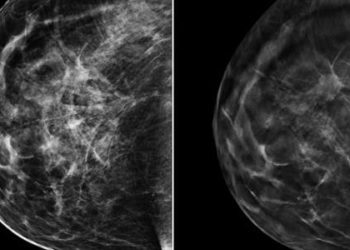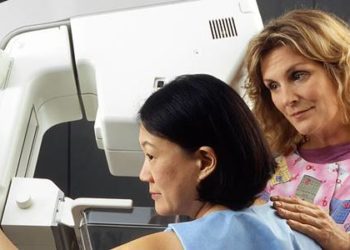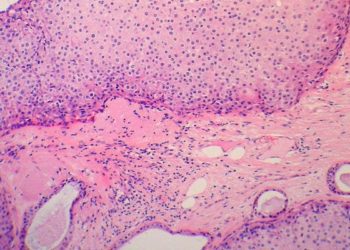USPSTF recommends biennial screening mammography in 50 to 74 year-old women
1. From a systematic review of the evidence, the U.S. Preventative Services Task Force (USPSTF) recommends screening mammography every other year in women 50 to 74 years old and individualizing the decision to begin mammography in women 40 to 49 years old, with insufficient evidence to make a recommendation for screening in women over 75 years old.
2. The USPSTF found insufficient evidence to make recommendations regarding the use of digital breast tomosynthesis as a primary screening method and for the use of adjunctive imaging (ultrasound, MRI, DBT, etc.) in women identified as having dense breasts.
Evidence Rating Level: 2 (Good)
Study Rundown: The recommendation statements by the United States Preventative Services Task Force (USPSTF) are based on reviews of the current evidence regarding the benefits and harms of preventative health care services. Breast cancer represents the second most common cause of death in women, making adequate screening tests a public health priority. However, screening mammography is not without harm, as the overdiagnosis and subsequent treatment of non-life-threatening breast cancers may result in unnecessary surgery. From this current analysis, the USPSTF recommended screening mammography every other year for women 50 to 74 years old. The decision to begin biennial screening in the fourth decade of life should be individualized to the patient, as this age group was less likely to avoid death and had greater false positive rates, which ultimately lead to greater unnecessary invasive biopsies. Nonetheless, screening in this age group may be beneficial in women with a first-degree relative who had breast cancer. Furthermore, there was insufficient evidence to make a recommendation regarding screening mammography in women over 75 years old. Additionally the USPSTF found insufficient evidence to assess the adequacy of digital breast tomosynthesis (DBT) as a primary screening method or to assess the use of adjunctive imaging (ultrasound, MRI, DBT) in women with dense breasts. Overall, this recommendation may guide primary care providers in deciding when to begin screening mammography in their patients.
Click to read the study published today in the Annals of Internal Medicine
Relevant Reading: Reduction in mortality from breast cancer after mass screening with mammography
In-Depth [systematic review]: The USPSTF conducted a systematic review of current evidence on the utility of screening mammography in the prevention of breast cancer. The number of breast cancer deaths avoided over 10 years per 10,000 women screened was 4 (95%CI 0-9) for women ages 40-49, 8 (95%CI 2-17) for age 50-59, 21 (95%CI 11-32) for ages 60-69 and 13 (95%CI 0-32) for ages 70-74. The USPSTF recommendations were based on maximizing the number of deaths avoided while also taking into account the number of false positives, breast biopsies and missed cancers. These recommendations apply to women over 40 years without breast cancer or prior high-risk breast masses and no BRCA1/2 mutations or history of chest radiation at a young age. The USPSTF Grade B recommendation suggests biennial screening mammography from age 50 to 74 years because screening in this age group resulted in the greatest reduction in risk of cancer-death. There was a small net benefit found for beginning screening in women age 40 to 49, and therefore the recommendation (Grade C) was to individualize the decision on when to begin screening to each patient. Due to insufficient evidence, the USPSTF could make no recommendations regarding women over 75 years old, digital breast tomosynthesis for primary screening, or the use of adjunctive imaging in women with dense breasts (Grade I).
Image: PD
©2016 2 Minute Medicine, Inc. All rights reserved. No works may be reproduced without expressed written consent from 2 Minute Medicine, Inc. Inquire about licensing here. No article should be construed as medical advice and is not intended as such by the authors or by 2 Minute Medicine, Inc.






